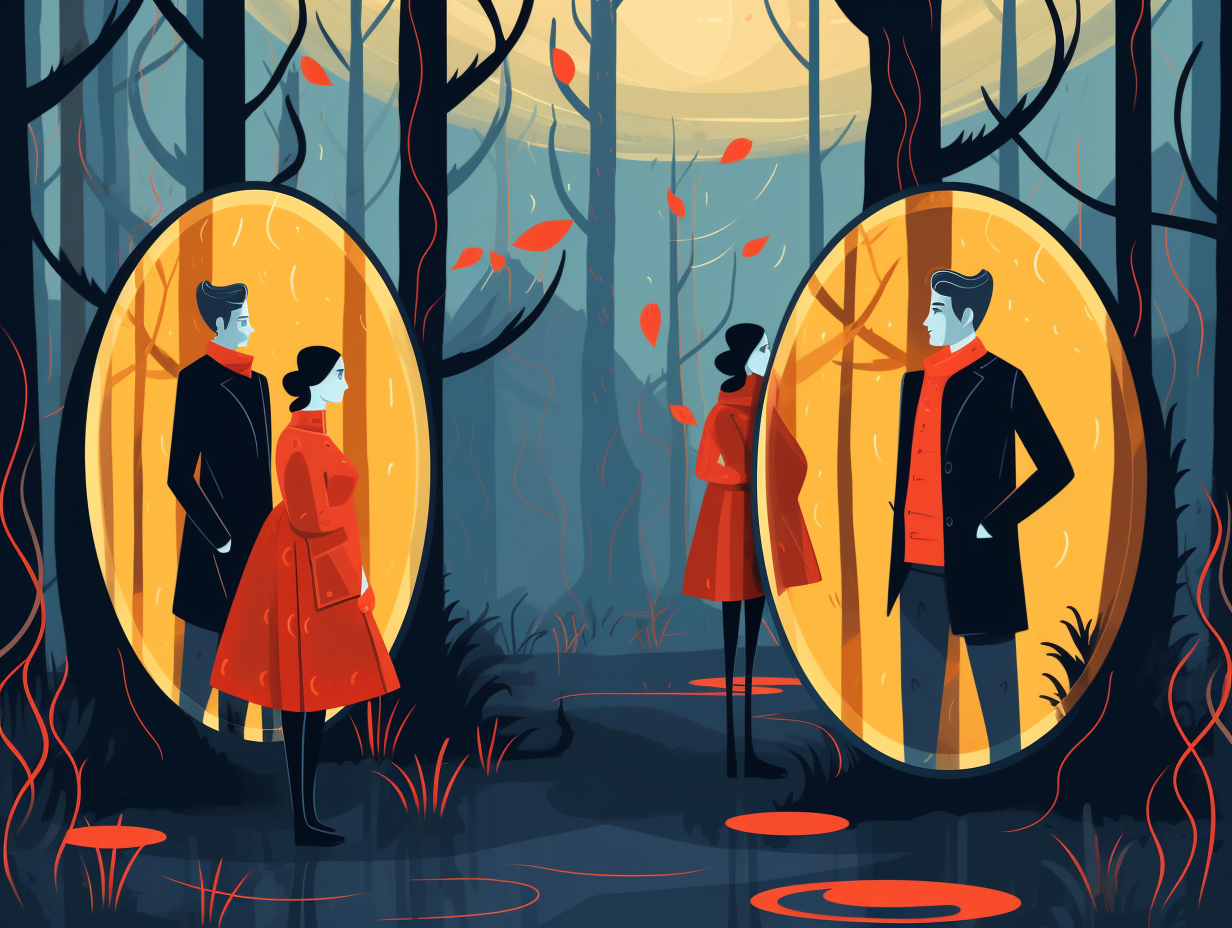Discover the Magic: Top 11 Mesmerizing Fun Facts About Shapes You'll Love to Learn!

1. Square's Acute Incommensurability
Did you hear about the square that walked into a bar and ordered a glass of Pythagorean wine? It was having an acute case of incommensurability: In reality, the sides and diagonal of a square are incommensurable, meaning they cannot be expressed as a ratio of integers. This fact was discovered by the Ancient Greeks and can be attributed to the Pythagorean theorem. Euclid's "Elements" contains one of the most famous proofs of this theorem, which states that the sum of the squares of the legs of a right triangle equals the square of the hypotenuse.
Source => alxmjo.com
2. Golden Ratio: Art's Original Influencer
Hold onto your paintbrushes, geometry fans! It turns out that the golden ratio might have been the original "influencer" in the art world, popping up in works from ancient Greece all the way to da Vinci's masterpieces: The golden ratio, a divine proportion studied since ancient Greek times, has been applied to creations like the Parthenon, Leonardo da Vinci's Annunciation, and even modern abstract art by Piet Mondrian, proving that beauty extends beyond merely the eye of the beholder.
Source => artandobject.com

Embark on a wild geometrical adventure through ancient Egypt, where skilled arpedonapti land surveyors used ropes and geometry to create perfectly straight lines and circles for precise land measurements – way before GPS ever existed!
=> Fun Facts about Geometry
3. Octagonal Stop Sign Supremacy
When stop signs play "red light, green light" with traffic, they always come out on top – thanks to their octagonal attire: The unique eight-sided shape was chosen by the American Association of State Highway Officials (AASHO) in the 1920s due to its ease of recognition, visibility, and ability to be identified from the back by drivers going the opposite direction, making intersections less confusing and ensuring they could stand out in the dark – long before they started wearing reflective outfits in 1954.
Source => allstate.com
4. Squares: Closed Curve Hipsters
Fancy seeing squares in a whole new light? Don't be a square, be there or be... well, here's the twist: squares are actually the hippest of hip when it comes to closed curves! The cat's meow, if you will: a square is the lone wolf among closed curves, boasting four equal sides, four right angles, and each point equidistant from its foxy counterparts. Believe it or not, these groovy quadrilaterals are the fundamental building blocks for all sorts of mind-bending geometric concoctions and oh-so-useful applications in the wild world of science and engineering. Now ain't that a gas!
Source => clubztutoring.com

5. Hexagons: Nature's Party Animals
From the shimmering patterned dance floor of a geological disco to the tortoise's haute couture fashion sense, hexagons seem to know how to party with nature's finest: These alluring six-sided virtuosos make frequent appearances in basalt columns, tortoise shells, dragonfly eyes, and even Saturn's clouds, thanks to their structural efficiency and physics prowess, ideal for conserving mass and energy in honeycombs, snowflakes, crystal formations, and organic compounds like the ever-popular benzene.
Source => zmescience.com
6. Soccer Ball's Hexa-Penta Combo
When soccer balls decided to shape up, they really "hexed it with a touch of penta-mentality": The standard soccer ball design features a striking ensemble of 32 polygons - 12 pentagons and 20 hexagons - that create a spherical polyhedron with fascinating geometric and topological properties, winning hearts and goals worldwide with the international soccer federation's official stamp of approval.
Source => americanscientist.org
7. Cantor's Infinity Shape-Shifter
When even infinity seemed to have its limits in ancient Greece and the notion of the never-ending left the scholars suspicious: along came mathematician George Cantor who rocked the boat, spun the toga, and proved the consistency of the actual infinite, giving birth to new developments in calculus and forever changing the way we think about those shape-shifting infinity sets.
Source => math.dartmouth.edu
8. Parallelogram Party Tricks
Who would've thought parallelograms were party animals? They like to split themselves into two congruent triangles and have a doppelgänger called rhombus: The truth is, parallelograms can boast of some intriguing features, like having their diagonals bisect each other, and when they've got congruent sides, they're dubbed a rhombus! Even trapezoids get in on the action – if they're isosceles, their diagonals balance the party by being equal in length.
Source => mathplanet.com
9. Trapezoid's Identity Crisis
Did you hear the one about the trapezoid with an identity crisis? It walked into a bar and confounded everyone with its ability to change its stripes: a trapezoid can morph into a parallelogram, a square, or a rectangle, depending on the conditions – equal side lengths and right angles come in handy for these transformations!
Source => studysmarter.us

10. Möbius Strip Aesthetics
When life gives you Möbius Strips, make Möbius-Chineses: Did you know that these intriguing little strips can be crafted out of a single block of 6061 Aluminum, measuring 2.5 x .5 inches (63.5 mm x 12.7 mm) and weighing 2.5 oz? They even come in different finishes like anodized colors, raw machine finish, and satin for your aesthetic pleasure. Just note the subtle differences between the "Raw Aluminum - Machine" finish and the "Silver Anodized" aesthetics — the former has a raw, wild, and untamed look, while the latter channels its inner Apple product vibe. But if you prefer a slightly more subdued, classy approach, there's always "Raw Aluminum - Satin" to suit your fancy.
Source => altdynamic.com
11. Rainbows Tamed by Triangular Prisms
Rainbows on a leash: that's precisely what a triangular prism achieves when it gets its chance to tame rays of sunlight. By gracefully curbing these streaks of color, it separates them into violet and red divas that eventually prance out unharmed from its transparent incarceration, all thanks to a phenomenon called dispersion: The different frequencies of visible light refract in varying amounts as they pass through the triangle, with shorter-wavelength violet light refracting more than longer-wavelength red light, causing distinct colors to emerge at different angles. But when it comes to a rectangular prism, the parade is more subtle, leaving just a hint of thin red fringe on one end and a violet counterpart on the opposite side.
Source => physicsclassroom.com
Related Fun Facts




















